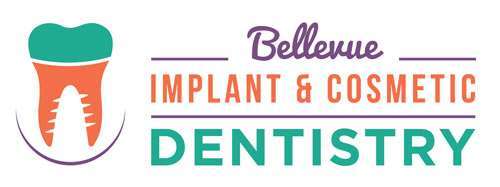If you have dreamed of a straighter smile, you may have heard about Invisalign® as an alternative to braces. Traditional braces have been the go-to treatment option for general dentists for many years. However, many patients worry about the regular adjustments, eating restrictions, and discomfort of metal braces.
Compared to traditional braces, Invisalign clear aligners are removable and discreet, providing patients more comfort and flexibility. Depending on your lifestyle, you may find it to be a more appealing treatment option.
Six frequently asked questions about Invisalign
Many people are curious to learn more about this orthodontic treatment option. Here are a few common questions about Invisalign and their answers to help patients prepare for a conversation with their dentist.
1. How does Invisalign technology work?
Invisalign treatment works through a series of clear plastic aligners, also referred to as trays. Each aligner applies gentle pressure to the teeth and slowly shifts them into place. The teeth will move fractions of a millimeter as the patient progresses through their treatment plan.
For the treatment to work, the patient must wear their aligners for 20-22 hours per day. With anything less, the trays will not apply enough pressure to shift the teeth.
2. What do aligners look like, and how are they made?
At the beginning of the treatment, the dentist or orthodontist will capture a mold of the patient’s bite. This mold is used to create a series of custom-made trays. Unlike traditional braces that use wires and metal, Invisalign aligners are made from medical-grade thermoplastic. The plastic is sturdy and clear, making trays less noticeable than braces.
3. How long does Invisalign treatment take?
The exact treatment time varies from patient to patient and depends on the complexity of the issues. For minor treatments that only affect a few teeth, treatment might only last a few weeks. More complex treatment plans could last several years. Typically, treatment averages between 9 and 18 months.
4. What are the eating restrictions during Invisalign treatment?
Since patients must remove their aligners before eating, there are no eating restrictions during treatment. Invisalign patients can continue eating all their favorite foods as long as they take out their trays.
While the trays are still in, the patient can only drink water. Anything else can stain or warp the trays, negatively affecting treatment. That said, many patients do experience soreness during treatment. They may prefer soft foods on days with more sensitivity.
5. Is the treatment painful?
It is common for patients to experience headaches, tooth pain, and sensitivity during treatment, especially after switching to the next tray in the series. However, this is normal and can be treated with over-the-counter pain medications.
6. What are the risks of Invisalign?
Invisalign can negatively impact oral health if the patient eats or drinks without removing the aligners. Patients should always brush and floss before re-inserting the trays, or else food particles could be trapped against the teeth for hours at a time.
In rare cases, Invisalign can cause damage to teeth roots and existing fixtures in the mouth, such as fillings or crowns. The patient must continue regular dental visits to get their teeth checked during treatment.
7. What are the benefits of Invisalign over other teeth straightening alternatives?
Invisalign aligners provide the most discreet way to straighten teeth. It is almost impossible to detect if a person has them on. Another major benefit Invisalign has over options like metal and ceramic braces is being removable. This allows patients to eat and clean their mouths as they have always done. It makes the treatment a lot more convenient.
Patients who choose braces have to learn new ways to eat with many brackets and wires in their mouths. The components that make up braces also make cleaning teeth more challenging. Other benefits of Invisalign include:
- Invisalign trays are more comfortable than metal braces
- Treatment times are often shorter with Invisalign
- Invisalign aligners deliver more precise forces on teeth
8. Will I need retainers after my treatment?
Yes, most patients have to wear retainers following treatment with Invisalign trays. Retainers prevent teeth from slowly shifting back to their original position after teeth straightening. Retainers allow patients to keep the results of their treatment for the rest of their lives. How long each patient has to wear one varies based on factors like the severity of their bite issues.
Contact us for Invisalign treatment
Everyone deserves a smile that they can confidently share with the world, and Invisalign is one way to make that happen. We are proud to offer consultations on Invisalign. Get in touch today to schedule your appointment and see if Invisalign is right for you.
Request an appointment here: https://www.implantdentalbellevue.com or call Bellevue Implant & Cosmetic Dentistry at 4252499186 for an appointment in our Bellevue office.
Check out what others are saying about our dental services on Yelp: Invisalign in Bellevue, WA.
Related Posts
Straighten Teeth In A Way That Few Will Notice
Does Invisalign Really WorkInvisalign uses a series of clear plastic aligners that are customized to the teeth of each individual patient. Invisalign is discreet, so few will know you are wearing aligners. Start straightening your …
Clear Braces: A Proven Method for Straightening Teeth
We use clear braces to straighten teeth and improve smiles. The use of clear braces is not something that is entirely new. In fact, there were detailed studies conducted from 1970 to 1990. The first …
Clear Braces in Bellevue: The Benefits and What They Accomplish
We can provide you with clear braces in Bellevue as a way to straighten your teeth and improve your smile. If you are one of the millions of adults that do not like their smile …
FAQs on Take Home Teeth Whitening Trays
The teeth whitening trays from a dentist are not the same as store-bought ones. The kits do not have the same chemical strength as that from a dentist. Take-home whitening trays can …

